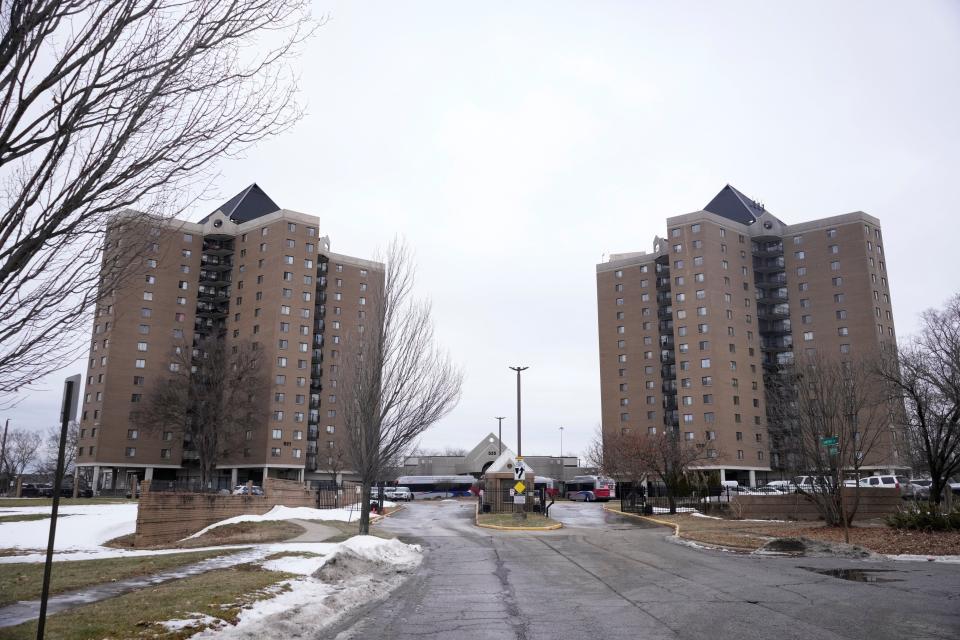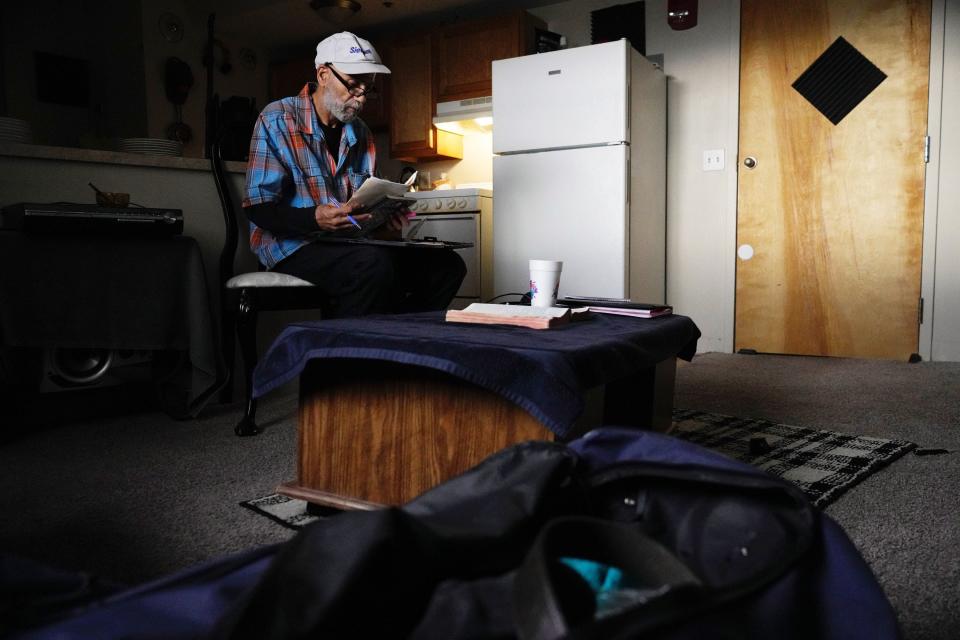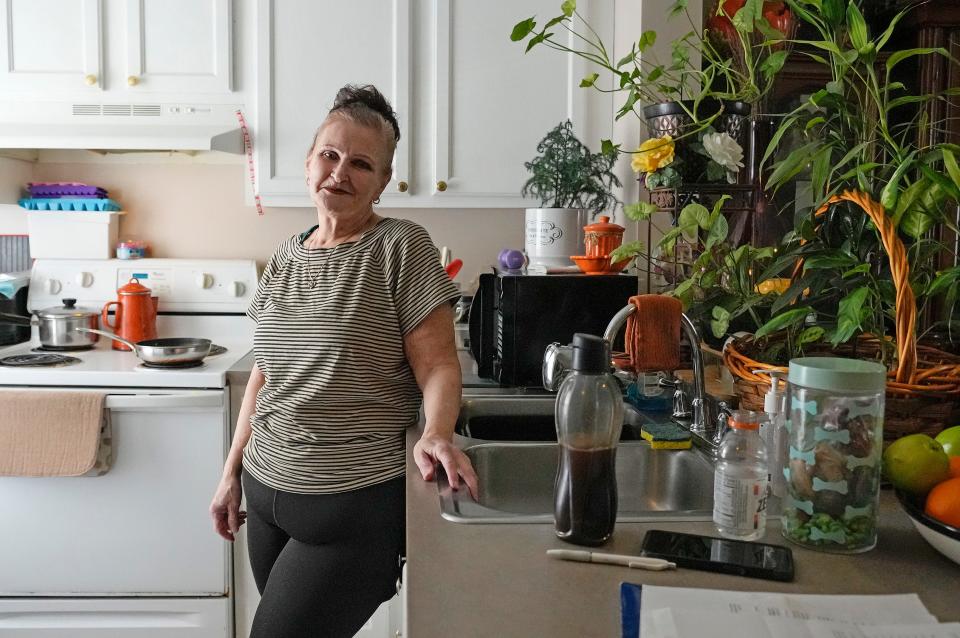Our view: Columbus' housing market not cutting it. We must all open our eyes to crisis

It is easy to disregard a number. It is considerably harder to ignore people.
As illustrated by two recent incidents, the affordable housing crisis is having a costly impact on real people in plain sight. Central Ohio can no longer afford to avert its eyes if it ever could.
The harshness of the crisis was on full display on Christmas Day at Latitude Five25, a complex Apartments.com listed as "the affordable, amenity-filled city living you have been craving!"
The city of Columbus deemed more than 150 units in the complex formerly known as Sawyer Tower unsafe for those who called them home due to lack of heat, electricity, burst pipes and nonworking elevators.
The crisis played out again in the pages of the Columbus Dispatch this month when 61 families were told they had to leave their homes in the Morse Glen apartments owned by Connecticut-based Hamilton Point Investments.

Their infraction: using federal Section 8 housing vouchers to pay rent.
According to Columbus City Attorney Zach Klein's office, Hamilton Point Investments' policy violates a 2021 city criminal ordinance that prohibits landlords from discriminating based on tenants’ source of income.
The company which touts "affordable apartment(s) for rent in Columbus" on its website backpaddled after the Dispatch's reporting prompted a letter from Klein's office.
Hamilton Point sent letters to tenants informing them that they can continue using the vouchers which "increases affordable housing choices for very low-income households by allowing families to choose privately owned rental housing."
What the numbers say about the need

People of all economic statuses must have a place to live in the Columbus region as it and the city continue to grow.
And grow it will.
A projection released in February from the Mid-Ohio Regional Planning Commission says the 15-county region is now on track to exceed 3 million people by 2050.
Growth over the next 25 years is expected to include 272,000 additional households and 357,700 more workers.
The city of Columbus grew by 15% between 2010 and 2020 to 905,748 residents, according to the U.S. Census.
A 2022 report funded by the Building Industry Association of Central Ohio concluded that Greater Columbus needs to double the number of homes it constructs over the next decade to meet demand from 8,000 to 9,000 a year to 14,000 to 19,000 a year.
Affordable housing options are shrinking in Columbus. Creating and encouraging them must be a priority.
According to Michael Wilkos, the United Way of Central Ohio's senior vice president of community impact, price hikes in the three years before COVID saw the metro area lose 19,469 affordable apartments that rented for less than $899 a month.
The average rent for a two-bedroom apartment jumped from $831 in 2016 to $1,295 in 2022.
That's a 56% increase.
At a recent BREAD organization forum on housing, Victoria "Tori" Bourret of the National Low Income Housing Coalition, there are only 43 affordable and available rentals in Ohio for every 100 extremely low-income renters whose households make less than $30,000 a year.
Low-income people cannot afford to pay the two-bedroom fair market apartment rental rate of $1,032 in Columbus and pay for other living expenses, Bourret said.
Ginther: Columbus area communities must stop adding jobs without allowing new homes, people
"That's really why we need more resources for housing," she said. "The market just doesn't cut it when we talk about the lowest income folks."
Finding solutions
Columbus City Council last week unveiled its 2023 Housing Initiatives which includes investments in the city's housing stock, preserving existing units, and legislation that it says would protect tenants and landlords.
More:Columbus City Council proposes steps to reduce affordable housing shortage
Opinion: We foot bill to keep Columbus' poorest families trapped and dodging bullets daily
Housing insecurity and homelessness are issues both Columbus Mayor Andrew J. Ginther and his election challenger Joe Motil have broached in recent Dispatch guest columns.
Motil, who claims many of council's ideas were lifted from him, says his approach to homelessness would include the creation of a transitional housing office funded primarily by federal, state and local dollars, the construction of tiny-home communities and building and rehabilitation units for transitional housing.

Columbus voters in November approved Ginther's $200 million bond package plan for affordable housing.
Ginther, who is spearheading a regional housing coalition, noted in a recent column that between 2009 and 2019, a single home was built in the Columbus area for every 2.5 jobs created.
Joe Motil: Closed warming centers set up to fail. Real plan to address homelessness needed
Saying Columbus cannot solve central Ohio's affordable housing crisis on its own, he urged other municipalities to overhaul their zoning codes as Columbus is doing during a fireside chat last week hosted by Columbus Urban League President Stephanie Hightower.
"The region has to solve this problem and we are up to it," Ginther said.
Ginther is right.
The region can get on top of an issue that will only get worse if left unchecked.
We must first all open our eyes before it is too late.
This piece was written by the Dispatch Opinion Editor Amelia Robinson on behalf of The Dispatch Editorial Board. Editorials are our board's fact-based assessment of issues of importance to the communities we serve. These are not the opinions of our reporting staff members, who strive for neutrality in their reporting.
This article originally appeared on The Columbus Dispatch: Editorial: Columbus' housing market not cutting it. Region must open eyes

 money
money 